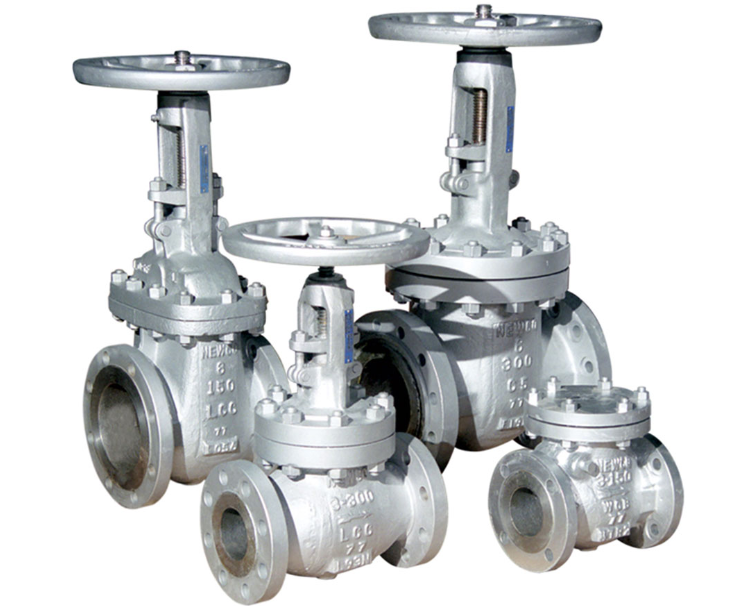
Introduction
Are you in need of a reliable valve for regulating the flow of fluids through pipelines in your industrial plant? Look no further than the cast steel globe valve! This versatile and durable valve is used across industries, from oil and gas to water treatment. In this blog post, we’ll explore what makes cast steel globe valves so beneficial, the different types available on the market, and even delve into how they’re made. By the end of this article, you’ll have all the knowledge you need to make an informed decision about incorporating cast steel globe valves into your operations. Let’s get started!
What is cast steel globe valve?
Cast steel globe valve is a type of industrial valve that is commonly used in pipelines to regulate the flow rate of fluids. It’s designed with a spherical body and has two ports, an inlet, and an outlet. The globe valve gets its name from the shape of its body which looks like a globe.
The cast steel material used in making this type of valve makes it durable, strong and resistant to corrosion caused by harsh conditions such as high temperatures or corrosive fluids.
Cast steel globe valves come in various sizes and designs depending on their intended use. They can be classified based on their port size, pressure rating or even sealing techniques.
One significant benefit of using cast steel globe valves is their ability to control the flow rate accurately by adjusting the position of the disc within the valve body manually.
Cast steel globe valves are essential components in many industrial processes because they offer efficiency when regulating fluid flow rates while maintaining safety standards.
The benefits of cast steel globe valve
Cast steel globe valves offer many benefits in a variety of industrial applications. One of the primary advantages is their durability and strength. Cast steel materials are known for their ability to withstand high temperatures, pressures, and corrosive environments.
In addition to their strength, cast steel globe valves also provide excellent flow control capabilities. They can regulate the flow of fluids and gases precisely, ensuring that processes run smoothly and efficiently.
Another benefit of using cast steel globe valves is their versatility. They come in different sizes, pressure ratings, and end connections to suit various system requirements. Whether you need a valve for water treatment plants or chemical processing facilities, there is likely a cast steel globe valve suitable for your application.
Moreover, these types of valves require minimal maintenance due to their robust construction materials that can withstand wear-and-tear over time. This translates into lower operating costs as well as fewer equipment downtimes.
Investing in cast steel globe valves offers significant long-term benefits such as durability and reliability while reducing downtime thus increasing productivity at your facility at an affordable cost compared with other alternatives on the market today!
The different types of cast steel globe valves
Cast steel globe valves come in different types, each designed to meet specific needs and applications. One common type is the angle globe valve which has a 90-degree bend in its body, making it ideal for installations where space is limited or piping changes direction. Another type is the Y-type globe valve which features a Y-shaped body that helps reduce pressure drop and turbulence in fluid flow.
Another popular type of cast steel globe valve is the stop-check valve which functions as both a stop valve (allowing full shut-off) and check valve (preventing backflow). This makes it suitable for use in systems where safety is critical such as water treatment plants, power generation facilities or chemical processing plants.
Other types of cast steel globe valves include the bellows-sealed globe valve used for high-pressure steam applications, cryogenic globe valves designed to withstand extreme low-temperature conditions, and control valves that allow operators to modulate flow rate within tight tolerances.
Ultimately, choosing the right type of cast steel globe valve depends on factors like system requirements, operating conditions and budget constraints. Understanding these factors can help ensure optimal performance and longevity from your equipment investment.
How to make cast steel globe valve
Cast steel globe valves are widely used in various industries due to its high durability and resistance to wear and tear. Making a cast steel globe valve requires several steps that need to be followed carefully.
Firstly, the design of the valve is prepared on paper or using computer-aided design software. Once finalized, the pattern for casting is created by carving it out of wood or plastic.
Next, molten steel is poured into the mold using a foundry furnace. The mold is then cooled slowly until it solidifies into the desired shape of a globe valve body.
Afterwards, various components such as disc, stem and seat ring are machined separately from stainless steel material before being assembled together with the body.
The final step involves pressure testing the completed valve to ensure proper functioning before releasing it for sale or installation in piping systems.
Making a cast steel globe valve requires precision and attention-to-detail throughout each stage of production.
Conclusion
To sum it up, cast steel globe valves are essential components in various industries. They play a significant role in regulating the flow of fluid and preventing backflow. Choosing the right type of valve for your application is crucial to ensure optimum performance.
Making a cast steel globe valve requires expertise, precision, and specialized equipment. The process involves several steps such as casting, machining, assembly, testing, and finishing. By following these steps correctly and using quality materials and techniques, you can produce a reliable and durable valve that meets industry standards.
Understanding how to make cast steel globe valves enables manufacturers to provide high-quality products that meet customers’ needs. Whether you’re producing valves for oil refineries or water treatment plants, ensuring their reliability and efficiency is vital to maintain safety and productivity in your operations.





